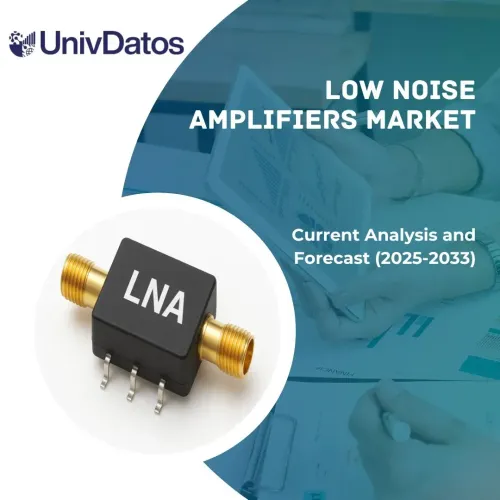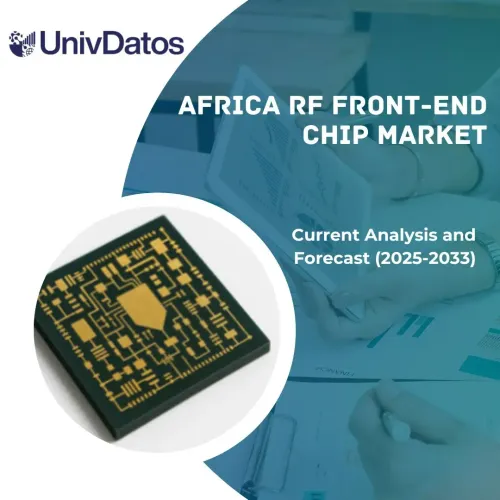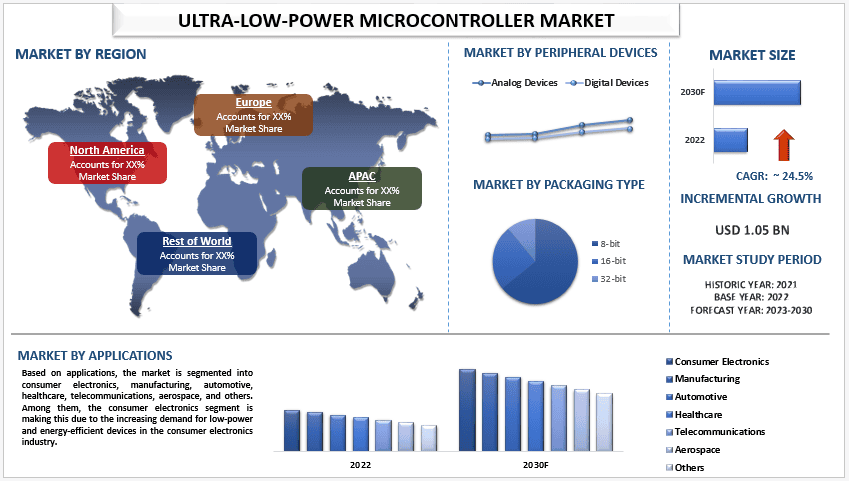
초저전력 마이크로컨트롤러 시장은 2022년 10.5억 달러로 평가되었으며, IoT 장치 보급 증가에 힘입어 예측 기간(2023-2030) 동안 약 24.5%의 꾸준한 성장률을 보일 것으로 예상됩니다.초저전력 마이크로컨트롤러는 최소한의 전력 소비로 작동하도록 설계된 마이크로컨트롤러의 한 유형입니다. 이러한 마이크로컨트롤러는 일반적으로 웨어러블 기기, 사물 인터넷(IoT) 센서, 의료 기기 등 배터리 구동 기기에서 사용되며, 긴 배터리 수명이 필요합니다. 웨어러블 기기와 스마트 홈에 대한 수요 증가로 인해 초저전력 마이크로컨트롤러에 대한 수요가 증가하고 있습니다. 또한 의료 기기 및 에너지 효율적인 기기에 대한 수요 증가도 시장 규모에 큰 영향을 미쳤습니다. 심박 조율기, 인슐린 펌프, 혈당 측정기와 같은 의료 기기는 적절한 기능을 보장하기 위해 안정적이고 효율적인 전력 관리 솔루션이 필요합니다. 그 결과, 이러한 기기의 전력 요구 사항을 충족하기 위해 초저전력 마이크로컨트롤러의 수요가 증가했습니다.
시장에서 활동하는 주요 기업으로는 Atmel Corp.; Cypress; EPSON semiconductor; Freescale Semiconductor, Inc.; Fujitsu; Holtek; Infineon Technologies AG; Intel Crop.; Microchip Technology Inc.; NXP Semiconductors 등이 있습니다.
보고서에 제시된 통찰력
“주변 장치 중 아날로그 장치 부문은 예측 기간 동안 상당한 시장 성장을 보일 것입니다.”
주변 장치에 따라 시장은 아날로그 장치와 디지털 장치로 세분화됩니다. 이 중 아날로그 장치 부문은 다양한 애플리케이션에서 저전력 및 고정밀 아날로그-디지털 변환기(ADC) 및 디지털-아날로그 변환기(DAC)에 대한 수요가 증가함에 따라 시장의 최대 점유율을 차지하고 있습니다. 예를 들어, 의료 분야에서는 가속도계, 자이로스코프, 압력 센서와 같은 아날로그 센서가 심박수, 혈압 및 신체 움직임과 같은 활력 징후를 측정하는 데 사용됩니다.
“애플리케이션 중 소비자 가전 부문은 예측 기간 동안 상당한 시장 성장을 보일 것입니다.”
애플리케이션에 따라 시장은 소비자 가전, 제조, 자동차, 의료, 통신, 항공우주 및 기타로 세분화됩니다. 이 중 소비자 가전 부문은 소비자 가전 산업에서 저전력 및 에너지 효율적인 기기에 대한 수요가 증가함에 따라 이를 주도하고 있습니다.예를 들어, NPD Group의 보고서에 따르면 스마트폰, 태블릿 및 노트북을 포함한 휴대용 전자 기기의 전 세계 소매 판매액은 2020년에 4,650억 달러에 달했습니다. 이는 2019년보다 15% 증가한 수치이며, 이러한 기기에 대한 강력한 수요를 나타냅니다.
“아시아 태평양이 시장에서 상당한 점유율을 차지할 것입니다.”
아시아 태평양 지역은 중국, 인도, 한국을 포함한 세계 최대의 소비자 가전 시장 중 일부가 위치하고 있어 시장에서 상당한 점유율을 차지할 것으로 예상됩니다. 이러한 시장은 스마트폰, 노트북 및 기타 소비자 가전 기기의 채택이 크게 증가하면서 빠르게 성장하고 있습니다. 이러한 수요 증가는 이러한 기기에서 초저전력 마이크로컨트롤러의 채택을 촉진하고 있습니다. 또한 이 지역은 인구가 많고 증가하고 있으며, 이는 에너지 효율적이고 저전력 기기에 대한 수요를 증가시키고 있습니다. 이는 에너지 공급이 종종 부족한 도시 지역에서 특히 중요합니다. 소비자 가전 기기에서 초저전력 마이크로컨트롤러를 사용하면 에너지 소비를 줄이고 이 지역의 전반적인 지속 가능성을 향상시키는 데 도움이 됩니다.유엔에 따르면 아시아 태평양 지역은 세계 인구의 약 60%에 해당하는 45억 명 이상의 인구가 거주하고 있습니다. 이 많은 인구는 앞으로도 계속 증가할 것으로 예상되며, 2050년까지 13억 명이 더 증가할 것으로 예상됩니다..
초저전력 마이크로컨트롤러 시장 보고서 범위
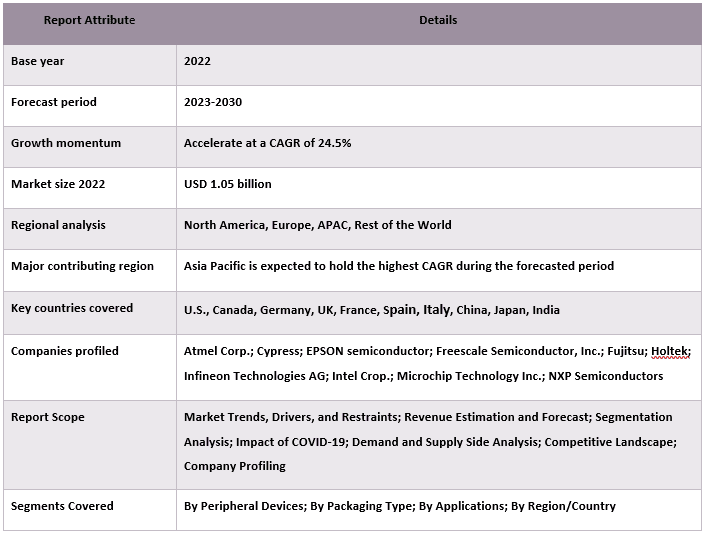
이 보고서를 구매해야 하는 이유:
- 이 연구에는 인증된 주요 업계 전문가가 검증한 시장 규모 및 예측 분석이 포함되어 있습니다.
- 이 보고서는 전체 산업 성과를 한 눈에 볼 수 있도록 간략하게 제시합니다.
- 이 보고서는 주요 비즈니스 재무, 제품 포트폴리오, 확장 전략 및 최근 개발에 중점을 두고 주요 업계 동료에 대한 심층 분석을 제공합니다.
- 업계에서 지배적인 동인, 제약, 주요 트렌드 및 기회에 대한 자세한 검토.
- 이 연구는 다양한 부문에서 시장을 포괄적으로 다룹니다.
- 업계의 심층적인 지역별 수준 분석.
사용자 정의 옵션:
글로벌 초저전력 마이크로컨트롤러 시장은 요구 사항 또는 기타 시장 세그먼트에 따라 추가로 맞춤 설정할 수 있습니다. 이 외에도 UMI는 귀하가 고유한 비즈니스 요구 사항을 가질 수 있음을 이해하므로 귀하의 요구 사항에 완벽하게 맞는 보고서를 받으려면 언제든지 문의하십시오.
목차
초저전력 마이크로컨트롤러 시장 분석을 위한 연구 방법론
(2023-2030)
글로벌 주요 지역에서 초저전력 마이크로컨트롤러의 채택을 생성하고 분석하기 위해 수행된 세 가지 주요 단계는 과거 시장 분석, 현재 시장 추정, 글로벌 초저전력 마이크로컨트롤러 시장의 미래 시장 예측이었습니다. 과거 시장 데이터를 수집하고 현재 시장 규모를 추정하기 위해 광범위한 2차 조사가 수행되었습니다. 둘째, 이러한 통찰력을 검증하기 위해 수많은 결과와 가정이 고려되었습니다. 또한 글로벌 초저전력 마이크로컨트롤러 시장의 가치 사슬 전체에 걸쳐 업계 전문가들과 광범위한 1차 인터뷰가 진행되었습니다. 1차 인터뷰를 통해 시장 데이터를 가정하고 검증한 후, 전체 시장 규모를 예측하기 위해 톱다운/바텀업 방식을 사용했습니다. 그 후, 시장 세분화 및 데이터 삼각 측량 방법을 채택하여 관련 산업의 세그먼트 및 하위 세그먼트의 시장 규모를 추정하고 분석했습니다. 자세한 방법론은 다음과 같습니다.
과거 시장 규모 분석
1단계: 2차 출처 심층 연구:
연례 보고서 및 재무제표, 성과 발표, 보도 자료 등과 같은 회사 내부 출처를 통해 초저전력 마이크로컨트롤러 시장의 과거 시장 규모를 얻기 위해 상세한 2차 연구가 수행되었습니다.연례 보고서 및 재무제표, 성과 발표, 보도 자료 등,저널, 뉴스 및 기사, 정부 간행물, 경쟁사 간행물, 부문별 보고서, 타사 데이터베이스 및 기타 신뢰할 수 있는 간행물을 포함한 외부 출처저널, 뉴스 & 기사, 정부 간행물, 경쟁사 간행물, 부문별 보고서, 타사 데이터베이스, 및 기타 신뢰할 수 있는 간행물.
2단계: 시장 세분화:
초저전력 마이크로컨트롤러 시장의 과거 시장 규모를 얻은 후, 주요 지역에 대한 다양한 세그먼트 및 하위 세그먼트에 대한 과거 시장 통찰력과 점유율을 수집하기 위해 자세한 2차 분석을 수행했습니다. 주요 세그먼트는 주변 장치, 패키징 유형 및 애플리케이션으로 보고서에 포함되어 있습니다. 해당 지역의 전체 테스트 모델 채택을 평가하기 위해 국가별 분석이 추가로 수행되었습니다.
3단계: 요인 분석:
다양한 세그먼트 및 하위 세그먼트의 과거 시장 규모를 얻은 후, 초저전력 마이크로컨트롤러 시장의 현재 시장 규모를 추정하기 위해 자세한요인 분석을 수행했습니다. 또한 항공기 액추에이터의 다양한 주변 장치, 패키징 유형 및 애플리케이션과 같은 종속 변수 및 독립 변수를 사용하여 요인 분석을 수행했습니다. 전 세계 초저전력 마이크로컨트롤러 시장 부문에서 최고의 파트너십, 인수 합병, 사업 확장 및 제품 출시를 고려하여 수요 및 공급 측면 시나리오에 대한 철저한 분석이 수행되었습니다.
현재 시장 규모 추정 및 예측
현재 시장 규모 조정:위의 3단계에서 얻은 실행 가능한 통찰력을 바탕으로 현재 시장 규모, 글로벌 초저전력 마이크로컨트롤러 시장의 주요 업체 및 세그먼트의 시장 점유율에 도달했습니다. 위의 2차 접근 방식을 사용하여 필요한 모든 점유율 분할 및 시장 세분화를 결정하고 1차 인터뷰를 통해 검증했습니다.
추정 및 예측:시장 추정 및 예측을 위해 동인 및 트렌드, 제약 및 이해 관계자가 사용할 수 있는 기회를 포함한 다양한 요인에 가중치가 할당되었습니다. 이러한 요인을 분석한 후, 2030년의 주요 시장 전반에 걸쳐 다양한 세그먼트 및 하위 세그먼트에 대한 시장 예측에 도달하기 위해 관련 예측 기술, 즉, 톱다운/바텀업 방식을 적용했습니다. 시장 규모를 추정하기 위해 채택된 연구 방법론은 다음과 같습니다.
- 수익(USD) 측면에서 산업의 시장 규모와 국내 주요 시장 전반에 걸쳐 초저전력 마이크로컨트롤러 시장의 채택률
- 시장 세분 및 하위 세분의 모든 백분율 점유율, 분할 및 분석
- 제공되는 제품 측면에서 글로벌 초저전력 마이크로컨트롤러 시장의 주요 업체. 또한, 빠르게 성장하는 시장에서 경쟁하기 위해 이러한 플레이어가 채택한 성장 전략
시장 규모 및 점유율 검증
1차 연구:주요 지역의 주요 의견 리더(KOL), 최고위 임원(CXO/VP, 영업 책임자, 마케팅 책임자, 운영 책임자, 지역 책임자, 국가 책임자 등)과의 심층 인터뷰가 수행되었습니다. 1차 연구 결과는 요약되었으며, 진술된 가설을 입증하기 위해 통계 분석이 수행되었습니다. 1차 연구의 입력은 2차 연구 결과와 통합되어 정보를 실행 가능한 통찰력으로 전환했습니다.
다른 지역의 1차 참여자 분할
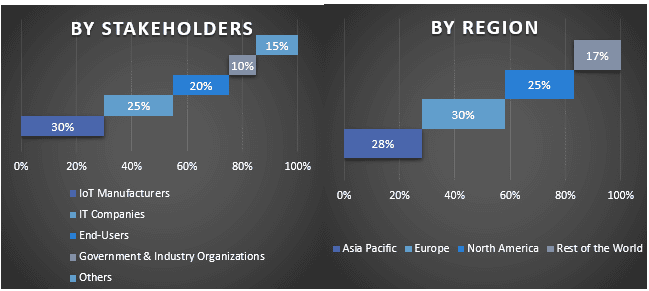
시장 엔지니어링
데이터 삼각 측량 기술이 전체 시장 추정을 완료하고 글로벌 초저전력 마이크로컨트롤러 시장의 각 세그먼트 및 하위 세그먼트에 대한 정확한 통계 수치를 도출하는 데 사용되었습니다. 데이터는 주변 장치, 패키징 유형 및 글로벌 초저전력 마이크로컨트롤러 시장의 응용 분야의 다양한 매개변수와 추세를 연구한 후 여러 세그먼트 및 하위 세그먼트로 분할되었습니다.
글로벌 초저전력 마이크로컨트롤러 시장 연구의 주요 목표
글로벌 초저전력 마이크로컨트롤러 시장의 현재 및 미래 시장 동향이 연구에서 정확히 지적되었습니다. 투자자는 연구에서 수행된 정성적 및 정량적 분석에 따라 투자를 위한 재량을 결정하는 전략적 통찰력을 얻을 수 있습니다. 현재 및 미래 시장 동향은 지역 수준에서 시장의 전체 매력을 결정하여 산업 참가자가 아직 개척되지 않은 시장을 활용하여 퍼스트 무버의 이점을 얻을 수 있는 플랫폼을 제공했습니다. 연구의 기타 정량적 목표는 다음과 같습니다.
- 가치(USD) 측면에서 초저전력 마이크로컨트롤러 시장의 현재 및 예측 시장 규모를 분석합니다. 또한, 다른 세그먼트 및 하위 세그먼트의 현재 및 예측 시장 규모를 분석합니다.
- 연구의 세그먼트에는 주변 장치, 패키징 유형 및 응용 분야가 포함됩니다.
- 초저전력 마이크로컨트롤러 산업에 대한 규제 프레임워크의 정의 및 분석.
- 다양한 중개인의 존재와 관련된 가치 사슬을 분석하고 산업의 고객 및 경쟁업체 행동을 분석합니다.
- 주요 지역의 초저전력 마이크로컨트롤러 시장의 현재 및 예측 시장 규모를 분석합니다.
- 보고서에서 연구된 주요 지역 국가는 아시아 태평양, 유럽, 북미 및 기타 지역을 포함합니다.
- 빠르게 성장하는 시장에서 지속하기 위해 시장 플레이어가 채택한 초저전력 마이크로컨트롤러 시장의 회사 프로필 및 성장 전략.
- 산업의 심층 지역 수준 분석
관련 보고서
이 상품을 구매한 고객님들도 함께 구매하신 상품



